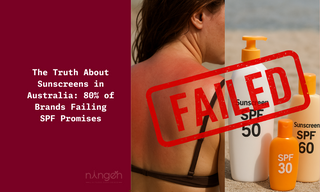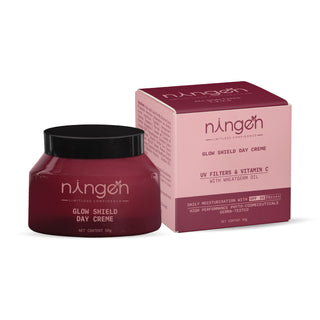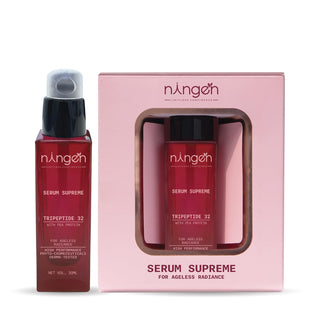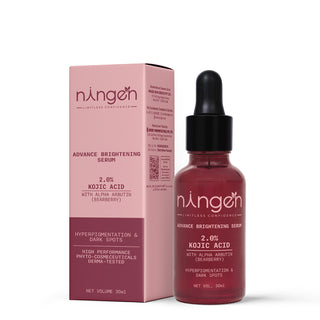Are you slathering on false promises? The bombshell study that's changing everything we thought we knew about sun protection.
Hey beautiful people!
"Slip, slop, slap" – if you're Australian, these three words are practically burned into your DNA. They've been living by this sun safety mantra for decades, religiously slapping on sunscreen before heading out into our harsh UV rays.
But what if I told you that the "slap" part of this equation has been letting you down? Big time.
A groundbreaking investigation by consumer group CHOICE has just revealed a significant shift in our understanding of sun protection in Australia. They tested 20 popular sunscreens claiming to offer SPF 50, and the results are jaw-dropping: 16 out of 20 failed to meet their promised protection levels. That's a whopping 80% failure rate!
I'm talking about brands you trust, products you've probably used, and sunscreens that cost anywhere from $10 to $40. The most shocking result? Ultra Violette's SPF 50+ sunscreen was found to have an actual SPF of just 4 – that's not protection, that's practically tanning oil! The result was so unexpected that the researchers sent it to a second lab for double-checking the findings.
In this Article;
The Study That Changed Everything
Major Brands That Failed the SPF Test
Why This Matters More Than You Think?
What This Means for Your Skincare Routine
The Study That Changed Everything
CHOICE – the non-profit organization that takes no advertising money and has no agenda other than protecting Australian consumers – didn't mess around with this investigation. They sent 20 popular sunscreens to a specialized, TGA-approved laboratory and put them through rigorous testing using the official Australian/New Zealand Sunscreen Standard.
The process? They used a "solar simulator" (basically a fancy machine that mimics the sun's rays) on volunteer skin to see how much UV protection each sunscreen actually provided. Think of it as sunscreen lying detector test – and boy, did it catch some whoppers!
Major Brands That Failed the SPF Test
Let me break down the worst offenders that'll make your jaw drop:
The Absolute Worst:
-
Ultra Violette Lean Screen SPF 50+ – Claimed 50+, tested at just 4 SPF (They were so shocked, they tested it TWICE at different labs!)
The "Meh" Performers (20s range): Other big brands like Cancer Council, Neutrogena, and Bondi Sands also didn't deliver the SPF levels they claimed, with some only offering SPF in the 20s:
-
Aldi Ombra 50+ – tested at 26
-
Banana Boat Baby Zinc SPF 50+ – tested at 28
-
Bondi Sands Zinc Mineral Body Lotion – tested at 26
-
Cancer Council Everyday Value – tested at 27
The Heroes: The 4 That Actually Delivered
Not all hope is lost! Out of all the sunscreens tested, only 4 passed. Four sunscreens actually lived up to their promises:
✅ Cancer Council Kids Sunscreen SPF 50+ – tested at 52 (and wallet-friendly!)
✅ La Roche-Posay Anthelios Wet Skin SPF 50+ – tested at 72 (the best performer and absolute overachiever!)
✅ Mecca Cosmetica To Save Body SPF 50+ – tested at 51
✅ Neutrogena Ultra Sheer Body Lotion SPF 50 – tested at 56
What's the Reason They're Failing?
1. Testing Methodologies and Variability
-
Human vs. Lab Inconsistencies: SPF testing relies on human subjects exposed to UV light, introducing variability due to individual skin types, application techniques, and environmental conditions. For example, Ultra Violette disputed Choice's SPF 4–5 results for its product (tested on 5–10 volunteers), citing its test (using a 10-person panel) showing SPF 61.7
-
Protocol Differences: Choice used international standards (ISO 24444), but smaller panels or divergent lab protocols (e.g., solar simulators vs. natural sunlight) can yield conflicting results. The TGA acknowledged variability across accredited labs
2. Photostability and Ingredient Degradation
-
Chemical Filter Breakdown: Ingredients like avobenzone (common in chemical sunscreens) degrade rapidly under UV exposure without stabilizers (e.g., octocrylene), reducing protection over time. Choice's outdoor testing may have exposed this flaw, whereas pre-market tests often use ideal conditions
-
Mineral Formulation Challenges: Zinc/titanium oxides can clump if poorly formulated, creating gaps in coverage. Suboptimal dispersion during manufacturing might explain failures in mineral-based products like Cancer Council Kids Clear Zinc (SPF 33 vs. claimed 50+).
3. Formulation and Manufacturing Flaws
-
Inactive Ingredient Interactions: Emollients, preservatives, or fragrances can destabilize active UV filters. For instance, solvents like butyloctyl salicylate (BOS) may artificially inflate SPF during testing but degrade under real-world conditions
-
Insufficient Active Ingredients: Some products may contain lower concentrations of UV filters than declared or use unstable combinations to reduce costs or improve texture .
4. Regulatory and Compliance Gaps
-
Lax Post-Market Surveillance: Brands self-certify SPF claims via pre-market testing, but ongoing monitoring is limited. The TGA does not routinely retest products post-approval unless complaints arise.
-
Outdated Standards: Current regulations (e.g., Australia's TGA, U.S. FDA) permit high SPF labels (e.g., 100+) despite evidence that protection plateaus above SPF 50. This may incentivize misleading claims
5. Application and Real-World Factors
-
Inadequate Dosage in Testing: SPF tests apply sunscreen at 2 mg/cm², but consumers typically use 0.5–1 mg/cm². Products with fragile formulations (e.g., sprays) fail more easily under thin application or windy conditions.
-
Packaging and Storage: Prolonged heat exposure (e.g., in cars) can degrade ingredients. Choice did not address storage history, but studies note this affects stability .
Why This Matters More Than You Think?
Here's the reality check: Two out of three Australians will be diagnosed with some form of skin cancer during their lifetime. That's not just a statistic – that's your friends, family, maybe even you.
When you're relying on SPF 50+ protection but actually getting SPF 20 or less, you're not just getting a bad deal – you're potentially putting your skin (and life) at risk.
Think about it: if you normally burn in 10 minutes, SPF 50 should protect you for about 500 minutes (over 8 hours). But if your "SPF 50" is actually SPF 20? You're only protected for about 200 minutes. That's a 5-hour difference of thinking you're safe when you're not!
The Price vs Protection Myth Busted
Here's something that'll blow your mind: expensive doesn't mean effective. The study found little correlation between price and actual protection.
Some of the failed products were premium brands costing $30-40, while the most affordable winner – Cancer Council Kids – costs just $4.93 per dose and actually EXCEEDED its SPF claims.
Your wallet doesn't determine your protection level – proper formulation and honest testing do.
What the Brands Are Saying? (And Why It Matters)
When confronted with these results, manufacturers didn't exactly roll over and admit fault. Some disputed the findings, others blamed "human error" or "sample mix-ups."
Ultra Violette, whose product performed worst, insisted their results were "scientifically impossible" and that they hadn't received sunburn complaints. But here's the kicker – CHOICE was so surprised by the initial results that they invested their own resources to test Ultra Violette's product AGAIN at a completely different lab in Germany. The result? Still terrible – SPF 5 instead of SPF 4.
This is exactly why CHOICE exists – to do the testing that brands won't do honestly themselves.
The Regulatory Wake-Up Call
Here's where it gets really interesting. In Australia, the TGA (Therapeutic Goods Administration) regulates sunscreens, but they don't actually test them independently. They rely entirely on reports from manufacturers.
It's like having a teacher grade their own homework – what could go wrong?
CHOICE – with their track record of fearless consumer advocacy and independent testing – is now calling for the TGA and ACCC (Australian Competition and Consumer Commission) to investigate and implement independent compliance testing. Because clearly, the honor system isn't working.

What This Means for Your Skincare Routine
First things first – DON'T PANIC and don't stop using sunscreen! Even a sunscreen that tests at SPF 20 when it claims SPF 50 is still infinitely better than no sunscreen at all.
But here's what you SHOULD do:
1. Check Your Current Stash
Look at the brands you're using. Are they on the failed list? If so, don't throw them out – just be more vigilant about reapplication and additional protection.
2. Consider Switching to Proven Winners
The four sunscreens that passed deserve your attention. Cancer Council Kids is not just effective – it's affordable and widely available.
3. Layer Your Protection
Sunscreen isn't a magic shield. Combine it with:
-
Wide-brimmed hats
-
UV-protective clothing
-
Seeking shade during peak hours (10 am-4 pm)
-
Sunglasses for eye protection
4. Reapply Religiously
Even the best sunscreen needs reapplication every 2 hours, or immediately after swimming or sweating.
The Bigger Picture: Trust in Beauty

This sunscreen scandal highlights a bigger issue in the beauty and skincare industry – the gap between marketing claims and actual performance.
This is why independent testing, third-party verification, and honest ingredient disclosure matter so much. When brands make claims about protection, anti-aging, or skin benefits, they should be able to back them up with real science, not just marketing copy.
Your Action Plan Moving Forward
-
Audit your sunscreen collection – check which brands you own against this study
-
Read beyond the marketing – look for independent testing and certifications
-
Invest in proven performers – sometimes the cheaper option is actually better
-
Practice proper application – most people use way too little sunscreen
-
Stay informed – follow reputable sources for beauty and skincare updates
The Bottom Line
This study isn't just about sunscreen – it's about trust, transparency, and the responsibility brands have to their customers. When you're dealing with skin cancer prevention, "close enough" isn't good enough.
The good news? Now you know which products actually work. The better news? Effective sun protection doesn't have to break the bank.
Remember, your skin is with you for life. Choose products that deserve that trust, and don't let clever marketing fool you into thinking price equals protection.
Stay protected, stay informed, and keep glowing!
What sunscreen are you using? Have you experienced any of these failed products? Drop a comment below and let's keep this conversation going!
Frequently Asked Questions
Q 1: Why did most sunscreens in Australia fail the SPF test?
Most sunscreens failed because their actual sun protection factor (SPF) was much lower than what was advertised on the label. CHOICE’s independent testing found that many brands didn’t provide the level of protection they claimed. The issue may be due to inadequate formulation, poor manufacturing controls, or lack of regulatory oversight.
Q 2: Is SPF 4 really that bad?
Yes. An SPF of 4 provides very minimal UVB protection, which means you can burn in just minutes under the sun, especially in Australia’s harsh UV conditions. If you expect SPF 50 protection and get SPF 4, you’re dangerously under-protected — it’s almost as bad as using no sunscreen at all.
Q 3: How often should I reapply sunscreen?
Even if you’re using a high-quality, verified sunscreen, it should be reapplied every 2 hours, and immediately after swimming, sweating, or towel drying. This is critical because sunscreen wears off over time, regardless of its SPF rating.
Q 4: Should I stop using sunscreen if the one I have fails the test?
No. some protection is still better than none. However, if you’re using a brand that was flagged for low SPF performance, consider reapplying more frequently, layering with other forms of sun protection (hats, shade, clothing), and switching to one of the products that passed independent testing.
Authoritative Sources & Further Reading:
-
CHOICE Sunscreen Testing Results - The complete study findings
-
10 News Australia - Breaking news coverage of the sunscreen investigation
-
Therapeutic Goods Administration (TGA) - Australia's medicine regulator
-
Cancer Council Australia - Comprehensive sun safety guidelines
-
Environmental Working Group Sunscreen Guide - Annual sunscreen safety ratings
-
Australian Bureau of Statistics - Sun Protection Behaviours - Latest sun protection data
-
Skin Cancer Foundation - Prevention and treatment information
-
Consumer Reports Sunscreen Testing - US-based independent testing












